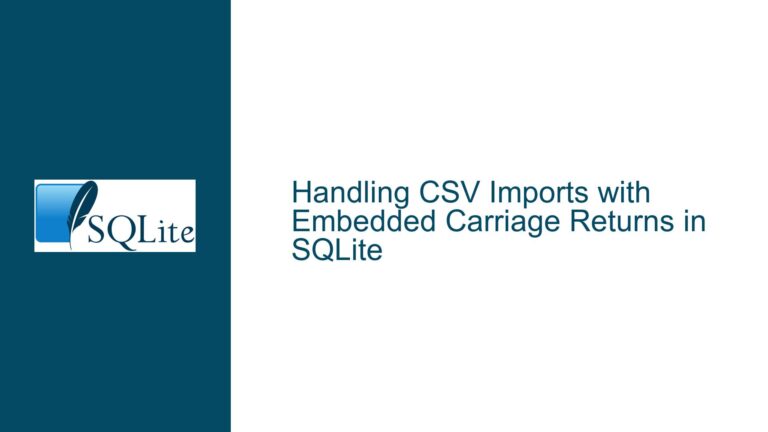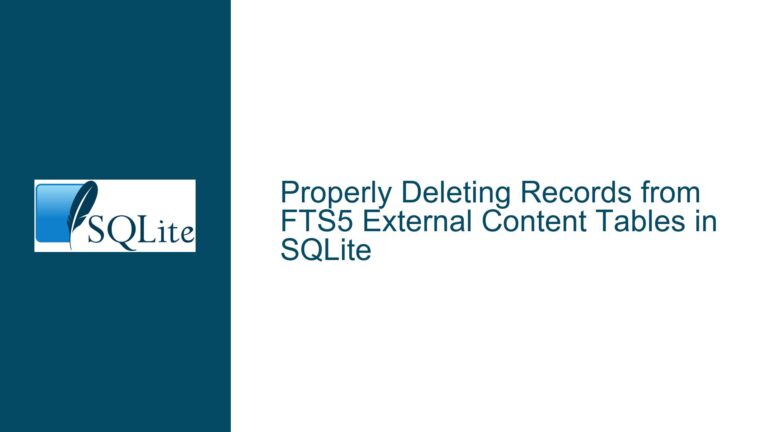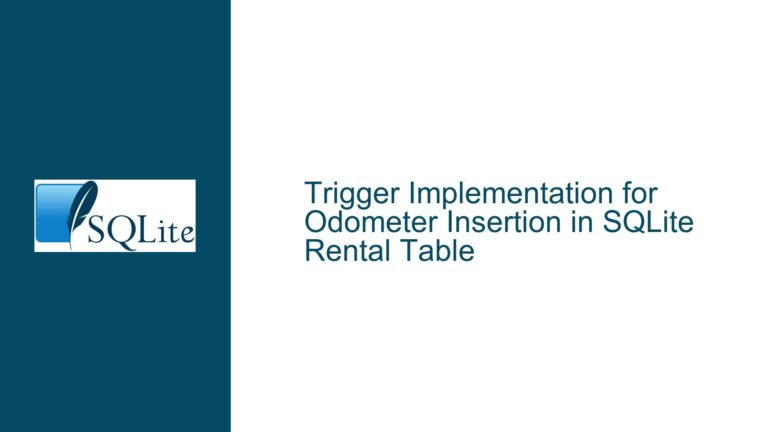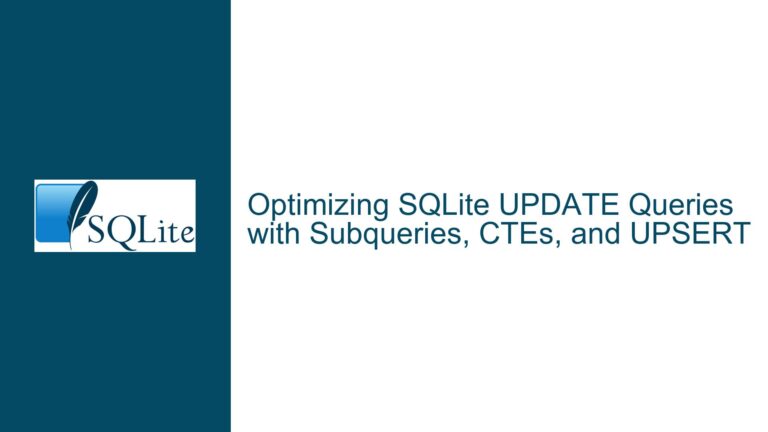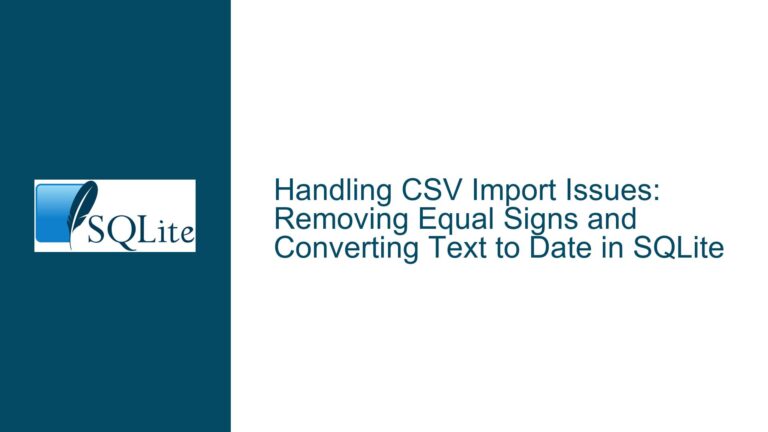SQLite .import Command Misinterprets Table Names with Dots
SQLite .import Command Creates Tables with Misleading Names
The SQLite .import command is a powerful tool for importing data from CSV files directly into SQLite tables. However, a significant issue arises when users attempt to import data into a table that includes a dot (.) in its name, particularly when the dot is intended to signify a schema-qualified table name. For example, a user might attempt to import data into a table named temp.summary, expecting the table to be created in the temp schema. Instead, the .import command creates a table in the main schema with the literal name temp.summary, including the dot. This behavior can lead to confusion and errors when querying the table, as the dot is interpreted as part of the table name rather than a schema qualifier.
The issue is compounded by the fact that SQLite allows double-quoted identifiers, which can include dots, spaces, and other special characters. When the .import command is used with a table name that includes a dot, SQLite treats the entire string as a single identifier, creating a table with that exact name in the main schema. This behavior is not intuitive, especially for users who are familiar with other database systems where dots are commonly used to separate schema names from table names.
For example, consider the following command:
.import summary_0.csv temp.summary
This command is intended to create a table named summary in the temp schema. However, SQLite creates a table named temp.summary in the main schema. When the user attempts to query the table using SELECT * FROM temp.summary;, SQLite returns an error indicating that the table does not exist. This is because the table is actually named temp.summary in the main schema, and the query is interpreted as looking for a table named summary in the temp schema.
Interpreting Dots in Table Names as Schema Qualifiers
The root cause of this issue lies in how SQLite interprets table names that include dots. In SQLite, dots are not inherently treated as schema qualifiers unless explicitly specified using the schema.table syntax. When a table name includes a dot, SQLite treats the entire string as a single identifier, regardless of whether the dot is intended to separate a schema name from a table name. This behavior is consistent with SQLite’s handling of double-quoted identifiers, which allow for special characters, including dots, to be included in table names.
The .import command does not have special logic to interpret dots as schema qualifiers. Instead, it treats the entire table name as a single identifier, creating a table with that exact name in the main schema. This behavior is particularly problematic when users attempt to import data into a table in a schema other than main, such as the temp schema. Since the .import command cannot create tables in schemas other than main, any attempt to specify a schema-qualified table name results in a table being created in the main schema with a misleading name.
For example, the command .import summary_0.csv temp.summary creates a table named temp.summary in the main schema, rather than creating a table named summary in the temp schema. This behavior is not immediately obvious, especially to users who are accustomed to other database systems where dots are used to separate schema names from table names.
Using Attached Databases and Temporary Tables for Data Import
To work around the limitations of the .import command, users can leverage SQLite’s support for attached databases and temporary tables. By attaching a persistent database to the current connection, users can import data into a temporary table in the main schema and then transfer the data to the desired schema using SQL queries. This approach allows users to manipulate the data as needed before inserting it into the final destination table.
For example, consider the following steps:
- Open an in-memory database, which is by definition transient and associated with the
mainschema. - Import the CSV file into a table in the
mainschema using the.importcommand. - Attach a persistent database to the current connection using the
ATTACHcommand. - Use SQL queries to transfer the data from the temporary table in the
mainschema to the desired table in the attached database.
Here is an example of how this can be done:
-- Open an in-memory database
sqlite3 :memory:
-- Import the CSV file into a temporary table in the main schema
.mode csv
.import summary_0.csv summary
-- Attach a persistent database to the current connection
ATTACH 'somefile.db' AS nottemp;
-- Transfer the data from the temporary table to the desired table in the attached database
INSERT INTO nottemp.sometable
SELECT some-list-of-columns
FROM main.summary
WHERE some-list-of-conditions;
This approach allows users to import data into a temporary table, manipulate the data as needed, and then transfer the data to a persistent table in the desired schema. By using attached databases and temporary tables, users can work around the limitations of the .import command and achieve the desired outcome.
In conclusion, the SQLite .import command’s handling of table names that include dots can lead to confusion and errors, particularly when users intend to specify a schema-qualified table name. By understanding how SQLite interprets table names and leveraging attached databases and temporary tables, users can work around these limitations and achieve their data import goals.

